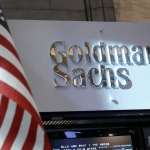We’ve seen some turbulent times during the first half of 2020. With the S&P 500 dropping more than 30% and now returning to positive for the year, volatility in the stock market has been unparalleled, to say the least. Just when there were high hopes for the recovery of the REIT market, things quickly changed for the worse. The broad index has fallen more than 10% in the past 3 weeks, and some individual companies in the retail and hotel space have dropped more than 20%.
The REIT sector tends to be one of the more defensive segments of the market and has consistently outperformed the S&P 500 in recessions and early recoveries, according to a paper by Cohen and Steers. The main thing that makes REITs a really strong defensive sector is predictability. While that varies a bit from company to company, largely, REITs’ revenues come from long-term lease contracts. That means that even in times of big uncertainty, those contracts are still in place and are delivering cash flow.
So, in theory, REITs should have outperformed the broader market once again, but clearly, that’s not the case. What’s different this time around?
Decreasing cash flows
Investors are already pricing in the second wave of COVID-19. With cases rapidly increasing around the world and especially in the US, concerns are largely weighing in on market prices.
Undoubtedly, the pandemic is a big problem for all sectors alike, with consumer demand going down and unemployment skyrocketing. But why has it been particularly bad for REITs?
The answer is that it all comes down to systemic risk. With mounting defaults and companies facing increasing financial difficulties, especially in the hotel and retail sector, this has led directly to huge stress in the real estate market - with rent collections going down by 50–60% for some industries. No one could have expected that half of their clients will stop paying rent. Things are looking even more bleak in the mortgage REITs space, where we’ve seen an unprecedented 12% forbearance in jumbo loans. However, decreasing cash flow tells only half the story.
The REIT sector tends to be one of the more defensive segments of the market and has consistently outperformed the S&P 500 in recessions and early recoveries.
Debt
A big part of the stress the sector’s experiencing right now is caused by the debt levels in the space. REITs are known to be some of the biggest users of leverage, which has helped them deliver superior returns in crisis-free times, but in the current environment, investors seem to be increasingly avoiding companies loaded with debt.
The average debt to equity ratio of the 174 biggest US REITs stands at 1.96, which is a very large number compared to the average for the S&P 500, which currently stands at a conservative 0.53. Looking at the debt to assets ratio, we see a similar scenario, although the difference there isn’t as large. The average for the S&P 500 is 0.32 for the last quarter, compared to the 0.45 for the REIT index - a sizable difference of more than 35%.
These solvency ratios have been one of the main concerns for investors in the past months, but the reason for that may be a bit unexpected. Everyone knows that in a vacuum, high leverage ratios are not good because they signal that the company will have trouble meeting their financial obligations in the future. However, we’ve recently seen a trend that’s even more concerning. Solvency problems can turn to liquidity problems really quickly, especially in the current environment. We’ve seen this happen to quite a few companies, the most recent example being EPR Properties which failed to uphold a few of the requirements set by the negative bond covenants, specifically the solvency and coverage ratios. This then led to some difficult talks with the creditors, but eventually, the company managed to avoid a technical default and some of the requirements were amended. However, this comes at a cost. With the increasing risk for the creditors, the cost of borrowing for the company also rises, which in turn can cause a liquidity crisis in the coming months.
REITs have always used a lot of debt and up until now, they’ve managed to correctly estimate their risk and exposure and avoid disasters. Their capital structure allows for some leeway during a significant economic downturn and considering the long-term structure of leases, a sudden drop in revenues has always looked almost impossible. What no one could have predicted however is this year’s Black Swan event, which led to a sudden stop in the economy, and not a downturn. The REIT sector was somewhat prepared for it with a considerable amount of cash reserves and undrawn credit lines, so the first wave didn’t lead to any major defaults in the market. The shock, however, significantly deteriorated the liquidity of most companies and in the case of a second wave, some companies will inevitably go under
How to mitigate some of the risks
One way investors can reduce their risk is by consistently averaging down and accumulating their position through many purchases. Lump-sum investing can prove really dangerous for the more risk-averse investors, especially in times of increased volatility. We can’t be certain of the direction of the market in the short term, but over the long term, REITs have proven their tendency to recover from crises and deliver superior risk-adjusted returns.













